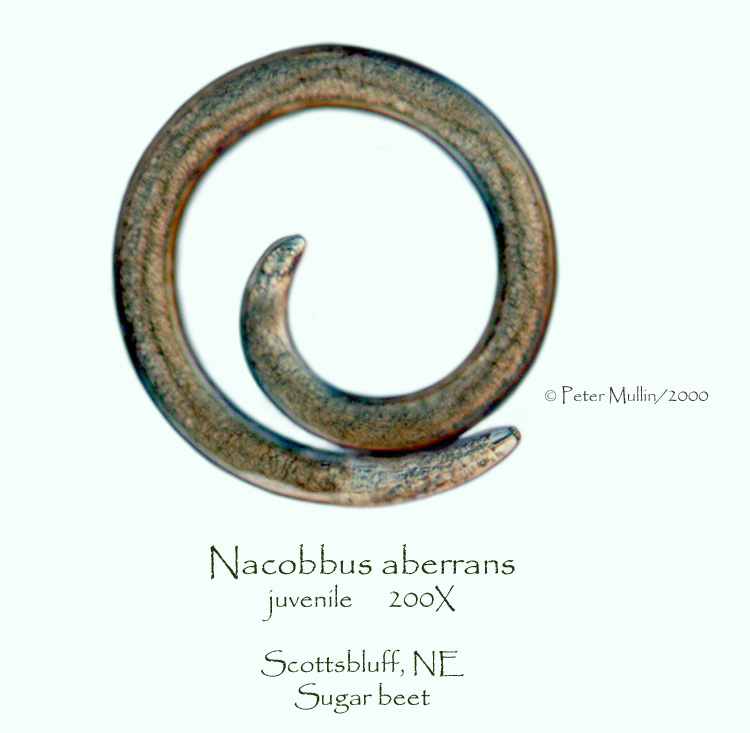Nacobbus aberrans
False root-knot nematode

-
Damage to Sugar beets. With high populations
of the false root-knot nematode, the sugarbeet storage root is distorted
and deformed, and the top growth of this plant is greatly reduced.
-
Biology. Nacobbus
aberrans is an endoparasitic species with sedentary, swollen
females inhabiting galls which they induce in the roots of their hosts.
-
Ecology. N. aberrans is indigenous to
the Americas. Approximately 1/3 of the sugarbeet fields in western Nebraska
were infested with N. aberrans. This nematode has also been
found on sugarbeet in limited areas in Colorado, Kansas, Montana, South
Dakota, and Wyoming.
-
Symptoms. Stunting, chlorotic leaves with rolled
margins, and wilting. Nematodes in the genus Nacobbus produce galls
that are similar in appearance to those caused by root-knot nematodes.
If diagnosis is primarily based on field symptoms, it is often erroneously
assumed that crop damage caused by Nacobbus species is due to Meloidogyne
species. For this reason, Nacobbus species are referred to
as false root-knot nematodes.
-
Damage to other crops. Nacobbus aberrans
is also a parasite of bean, chili pepper and tomato.
-
Control.
-
References. Sugarbeet
Nematodes (UC Pest Management Guidelines
|



